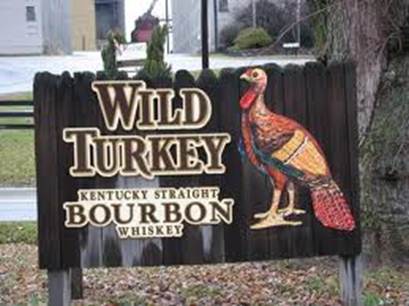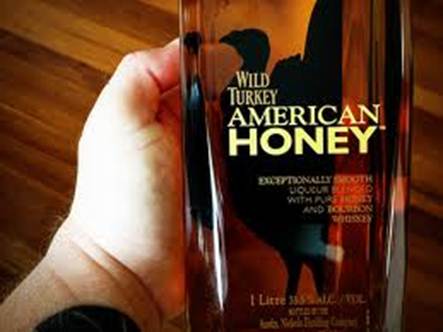
I had my first taste of bourbon when I
was quite young around the age of three.
Please don’t blame my poor parents. I was
going through the “myself” stage and while on a camping trip, thinking it was
my cranberry juice, I helped myself to a bottle of Wild Turkey belonging to a
friend of my father. I ingested one healthy swig before my facial expression
alerted my mother to the fact that something was wrong.
Many years later and legally able to enjoy
a sip of bourbon, I visited the Kentucky Bourbon Trail to learn more about the
one and only truly American spirit.
Named for Bourbon County in Kentucky,
bourbon dates back to the 1700s. The Scottish and Irish, who settled here,
brought with them their knowledge of distillation. Bourbon quickly became a
staple of early American life, allowing farmers to turn excess corn and grain
into a valuable trading commodity.
During Prohibition, many of Kentucky’s
distilleries closed their doors or rebranded their products as “medicinal.”
Repeal brought about the return of the Bourbon industry and in 1964, Congress
officially recognized Bourbon as a distinctive product of the United States.
The descendent of those first distillers
continue the tradition today. Kentucky produces more than 90 percent of all
Bourbon and the aptly named Kentucky Bourbon Trail preserves the region’s
history and promotes tourism.
I visited this picturesque area in October
2010 with my husband, Roger, and his parents, Allen and Rachel. I had to
abandon my hope of visiting all seven distilleries on the Kentucky Bourbon
Trail, as they are not conveniently located within stumbling distance of each
other. Because we were staying in Lexington, we selected the closest four to
visit Buffalo Trace, Woodford Reserve, Wild Turkey and Four Roses.
We began our tour at visit Buffalo Trace (www.buffalotrace.com), where s
working distillery has sat on the grounds since 1787. Named for an historic
path forged b migrating buffalo, Buffalo Trace is home to old brick buildings
where the Bourbon is aged by the natural heating and cooling of the interior.
This aging process results in the evaporation of a portion of the Bourbon or” the
angles share.” In addition to various bourbons, Buffalo Trace also produces a
sweet creamy Bourbon Cream Liquor and bourbon balls a chocolate covered Bourbon
confection.
Having only imbibed in a bourbon ball or
two, Rachel delivered s at our next top, Woodford Reserve.
Woodford Reserve (www.woodfordreserve.com), a
National Historic Landmark, has been producing bourbon since 1797 and is the
official bourbon of the Kentucky Derby.

Our tour took us behind the scenes of the
distillation process from the fermenting mash to the copper distilling kettles
and from bottling to bottles for sale in the gift shop. The tour concluded
with, you guessed it, complimentary samples of bourbon balls. At the end of day
one, I am not sure which I enjoyed more, the bourbons or the bourbon balls.
Day two was to begin at Four Roses
Distillery. Unfortunately, our handy GPS was not able to locate its address, so
we instead headed to Wild Turkey.
Wild Turkey (www.wildturkey.com) sits on the
site of the old Ripy family distillery founded in 1869. The brand was born in
1940 when a distillery executive shared a few bottles with friends during their
annual wild turkey hunt.
His friends liked the spirit so much that
they requested more of his “Wild Turkey Bourbon” the next year. We were able to
taste Wild Turkey American Honey Bourbon, slightly sweet liquor delicious when
mixed with lemonade or iced tea.
Thanks to the kind folks at Wild Turkey, we
were able to find our way to Four Roses. Four Roses Distillery (www.fourroses.us),a National Register
of Historic Places landmark, was built in 1910 and features Spanish Mission
style architecture.
According to legend, the distillery is so
named because the future wife of founder Paul Jones Jr. accepted his proposal
of marriage by wearing the agreed upon corsage of four red roses to a ball. The
lovely red roses, which cover the grounds in fragrant blooms, were planted in
honor of the lady.
There, I discovered my favorite bourbon,
the Four Roses Single Barrel Bourbon, and Roger discovered that unlike wine,
bourbon does not need to be swirled around the glass before tasting.
Our mused host, after watching Roger swirl
the smoky, caramel liquid, finally remarked, “I don’t know what you’re doing.
We just drink our bourbon here in Kentucky.”
As our trip came to an end, I was happy to
take home a better understanding of bourbon’s history and the role it played in
shaping our country, not to mention a few bottles of my favorites. My only
regret is not purchasing more boxes of bourbon balls.
To learn more about the Kentucky Bourbon
Trail visit www.kybourbontrail.com
What exactly is bourbon?
- While technically a whiskey or
barel-age distilled grain spirit, bourbon can only be called “bourbon”
if it meets the following requirements.
- Be produced in the United States.
- Contain a grain mixture of at least 51
percent corn.
- Be aged in new, charred oak barrels.
- E distilled to no greater than 160
proof.
- Enter the barrel for aging at no more
than 125 proof.
- Be bottled at 80 proof or more.